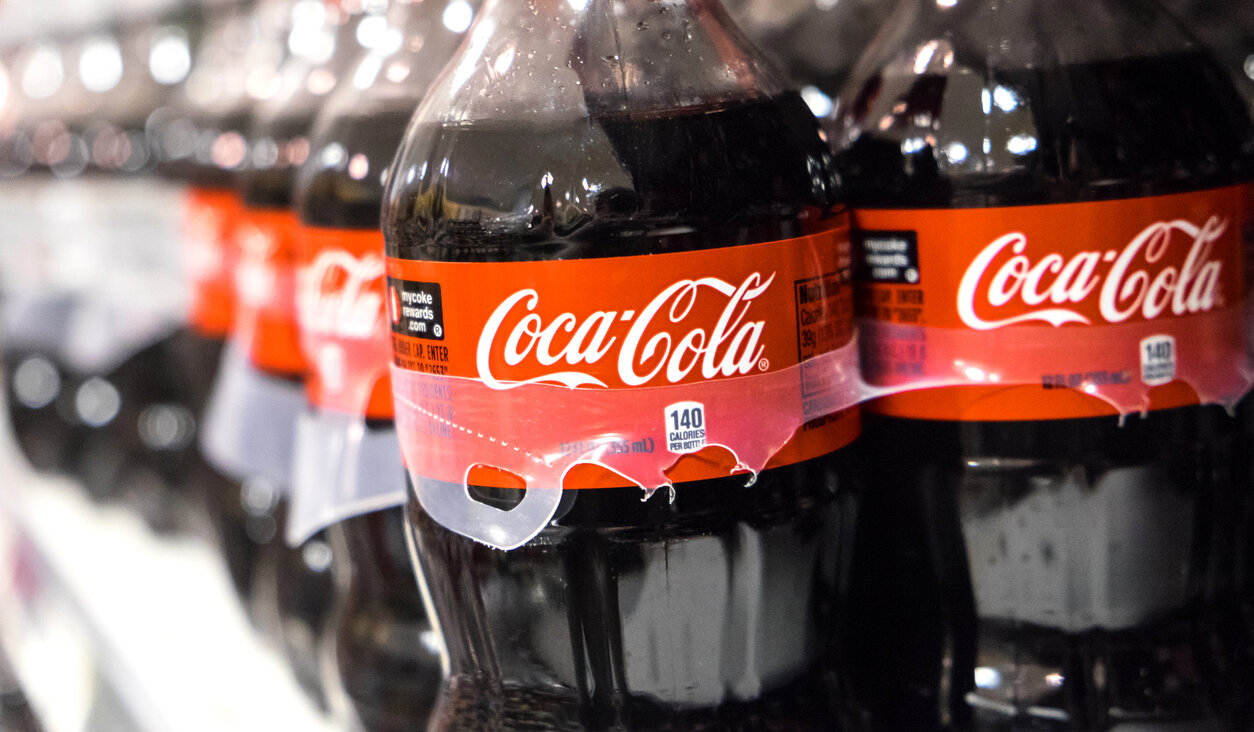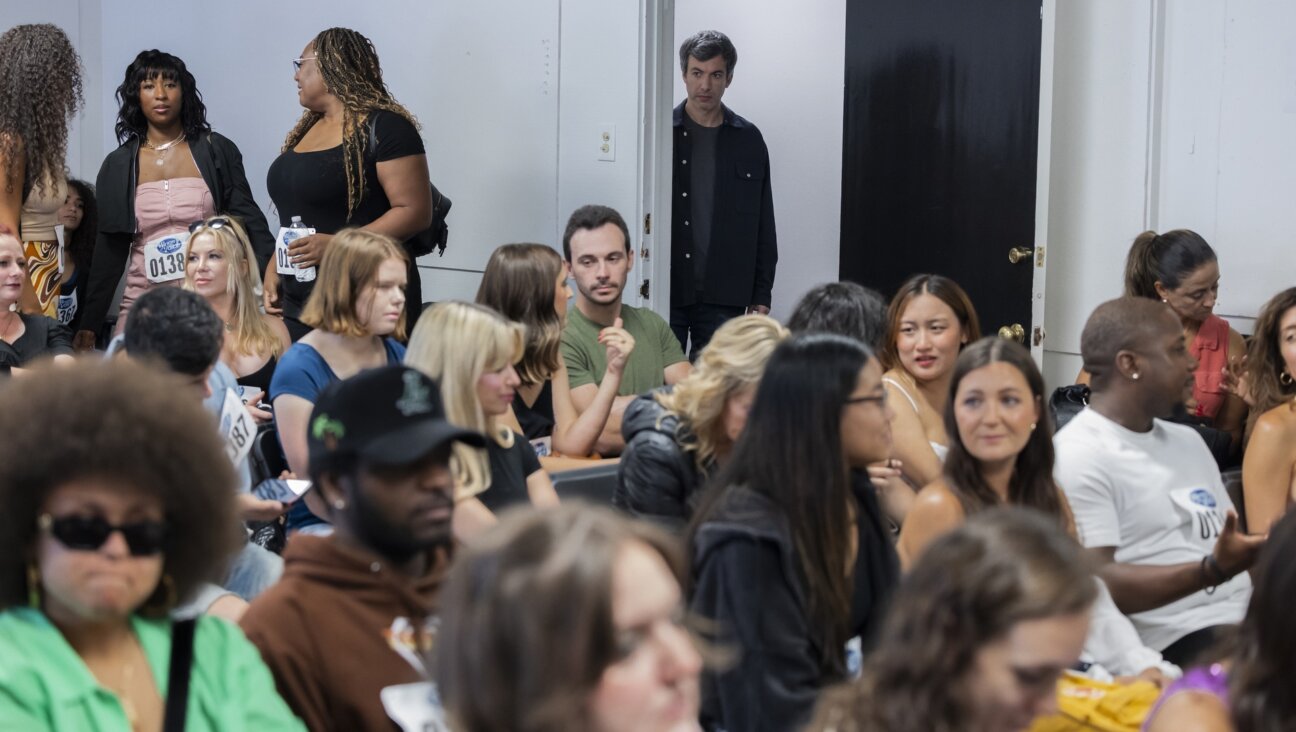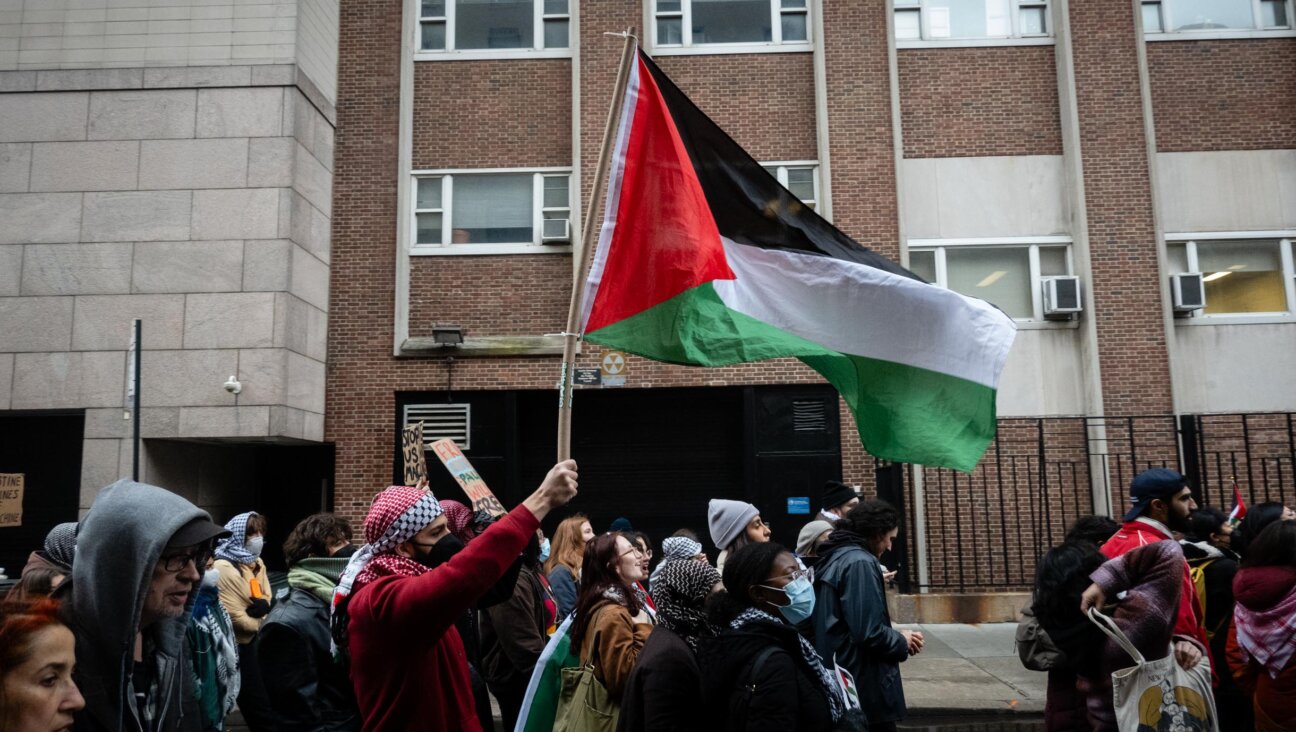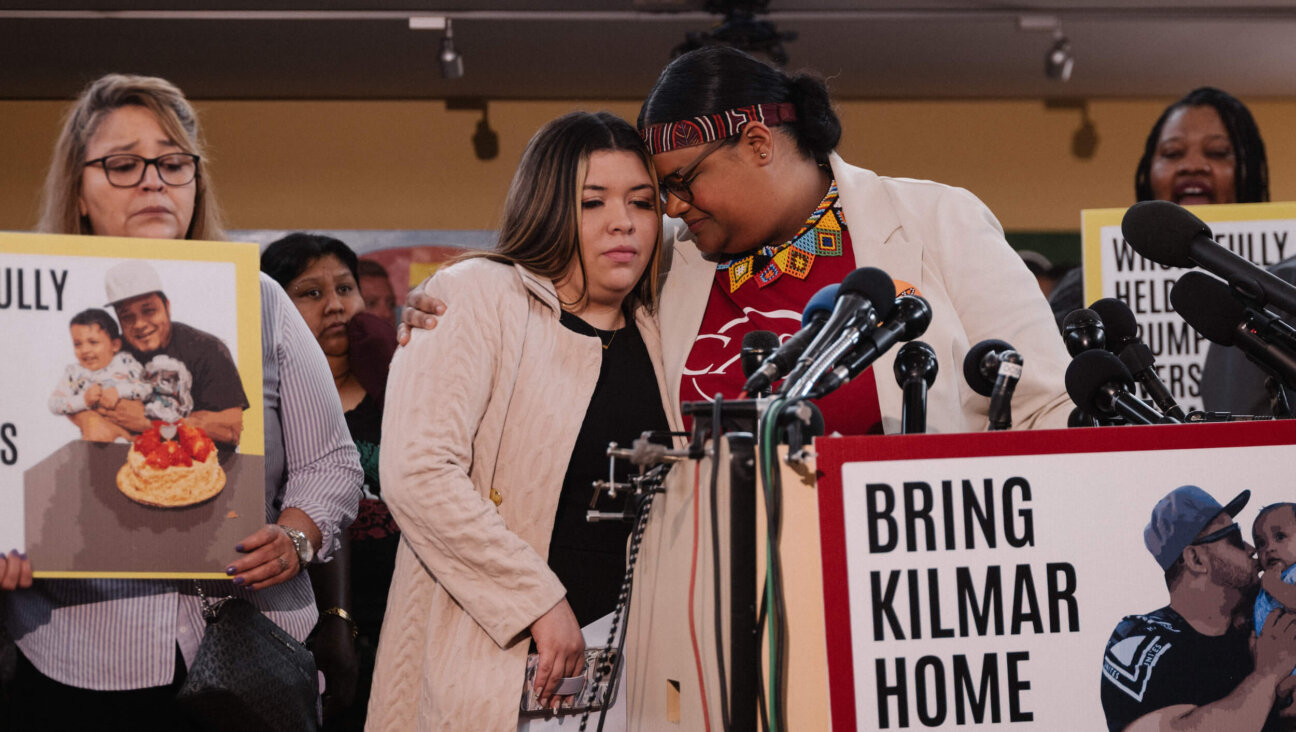Preserve Historic Sites Before Roof Falls in Again on Communal Heritage
The sudden collapse last week of the ceiling at the historic First Roumanian-American Congregation in New York should serve as a wake-up call to American Jews concerned with the preservation of their own heritage. Indeed, even before the roof fell in on the landmark Lower East Side synagogue, it was puzzling why historic preservation in America has not been a higher priority on the Jewish communal agenda. For a community with serious concerns about continuity, such historic sites are incomparable vehicles for educating young people and connecting them to their history and their faith.
Every day the need to preserve and restore these sites grows more acute. Synagogues like the First Roumanian-American Congregation, more familiarly known as the Rumanische shul, were the first spiritual homes for successive waves of European immigrants. They were built more than 100 years ago, and just like the bridges and tunnels of New York City, they’re bound to fail if not attended to. The same is true in all five boroughs and throughout the United States, from South Philadelphia to Boston’s North End to Maxwell Street in Chicago.
Even the success stories leave cause for concern. The project to restore the Eldridge Street Synagogue, which I head, secured a National Historic Landmark designation for the 1887 building and has inspired gifts from all funding sectors to rescue a structure that would otherwise have crumbled. As a result, the resident congregation, K’hal Adath Jeshurun, has been able to continue an unbroken tradition of worship at the site and, alongside it, a dynamic cultural institution has emerged. Still, the project is not complete and the process has taken too long.
With more urgent demands on philanthropic dollars, without the resources of a built-in constituency, and to a great extent because potential supporters have not been preservation-minded, it has been a consistent challenge to attract attention and capital funds. As a people, our destinies and itineraries have too often been dictated by people who despise us, and yet ironically we do not always take sufficient pride in the buildings we have built — the places we have declared our own.
It is not only synagogues that are at risk. Jewish landmarks have rapidly disappeared from the Lower East Side, the neighborhood that at one time housed more Jews per square acre than any place before, the neighborhood through which the ancestors of more than 80% of today’s American Jews passed. The Garden Cafeteria is gone, and the historic Forverts building that was once this newspaper’s offices has been sold. Today, the number of kosher restaurants remaining on the Lower East Side can be counted on one hand.
Having been in America for 350 years now, shouldn’t we value the sites of our collective journey, of our individual rites of passage, much more than we now do? We build anew when so many existing treasures, designed and erected with tremendous care and devotion in varied architectural styles, with extraordinary ornament, are there to be refurbished and reclaimed. We should not overlook such valuable tools for reinforcing and renewing Jewish commitment.
Historic buildings are anchors for their communities. In inner cities, they help to increase the value of surrounding properties, spur tourism and instill a sense of pride in local residents. In more sprawling suburban and rural areas, their uniqueness and authenticity offer sharp contrast to homogeneous strip malls.
Historic Jewish buildings serve the same function, whether they are filled with worshippers throughout the week or simply carry the memory of those worshippers. They are true links between the generations. They inspire secular Jews to reflect on their Jewishness. They lend valuable perspective to surrounding structures built by other ethnic and religious groups. They inspire young people to give generously, so that their own grandchildren can sit and contemplate the experiences of relatives four generations preceding them.
Not every Jewish child in America will have the opportunity to visit Israel, or walk through Auschwitz, or to attend a Jewish summer camp. That is unfortunate — but we can make certain that every child is exposed to his or her American Jewish heritage.
Every Jewish child has an ancestor who journeyed from a far-away place to come here. So why not a “Birthright America” program that brings every Jewish child to the Lower East Side, to Galveston, or to other port cities that served as entryways for our ancestors? Why not show our children the places where earlier generations began their new lives of religious freedom and economic opportunity, legacies that we have inherited and that we can too easily take for granted?
Let’s cultivate a new generation of foresighted philanthropists to follow in the footsteps of Ronald Lauder, who has made such an enormous impact on Jewish sites and communities in Eastern Europe. Let’s turn attention to our history and heritage stateside. It is just as easily lost and is no less precious.
Perhaps synagogues and Jewish reclamation projects can band together in a formalized network to share technical expertise, experience and resources. The ingredients for such an initiative were revealed in “Urban Diaspora,” a touring exhibition that the Eldridge Street Project hosted several years ago. Featured in it were houses of worship from coast to coast, from Leadville, Colorado to Natchez, Mississippi.
In each case, a group of volunteers assembled because these once-treasured buildings were imperiled. Often a resident congregation led the way. Sometimes volunteers were motivated by nostalgia. In approximately half the cases, the sites have remained sacred sites. Another quarter have become thriving Jewish cultural centers. And even where fates still hang in the balance, the buildings have become community rallying points.
These buildings all have the ability to speak, and they have lots to tell us. We must help the conversations continue.
So, please support your synagogue’s capital fund drive, but also go visit the historic shul or Jewish monument three blocks or three miles away. And listen.
The Forward is free to read, but it isn’t free to produce

I hope you appreciated this article. Before you go, I’d like to ask you to please support the Forward.
Now more than ever, American Jews need independent news they can trust, with reporting driven by truth, not ideology. We serve you, not any ideological agenda.
At a time when other newsrooms are closing or cutting back, the Forward has removed its paywall and invested additional resources to report on the ground from Israel and around the U.S. on the impact of the war, rising antisemitism and polarized discourse.
This is a great time to support independent Jewish journalism you rely on. Make a Passover gift today!
— Rachel Fishman Feddersen, Publisher and CEO
Most Popular
- 1

Opinion My Jewish moms group ousted me because I work for J Street. Is this what communal life has come to?
- 2

Fast Forward Suspected arsonist intended to beat Gov. Josh Shapiro with a sledgehammer, investigators say
- 3

Politics Meet America’s potential first Jewish second family: Josh Shapiro, Lori, and their 4 kids
- 4

Fast Forward How Coke’s Passover recipe sparked an antisemitic conspiracy theory
In Case You Missed It
-

Film & TV In ‘The Rehearsal’ season 2, is Nathan Fielder serious?
-

Fast Forward Pro-Israel groups called for Mohsen Mahdawi’s deportation. He was arrested at a citizenship interview.
-

News Student protesters being deported are not ‘martyrs and heroes,’ says former antisemitism envoy
-

Opinion This Nazi-era story shows why Trump won’t fix a terrifying deportation mistake
-
Shop the Forward Store
100% of profits support our journalism
Republish This Story
Please read before republishing
We’re happy to make this story available to republish for free, unless it originated with JTA, Haaretz or another publication (as indicated on the article) and as long as you follow our guidelines.
You must comply with the following:
- Credit the Forward
- Retain our pixel
- Preserve our canonical link in Google search
- Add a noindex tag in Google search
See our full guidelines for more information, and this guide for detail about canonical URLs.
To republish, copy the HTML by clicking on the yellow button to the right; it includes our tracking pixel, all paragraph styles and hyperlinks, the author byline and credit to the Forward. It does not include images; to avoid copyright violations, you must add them manually, following our guidelines. Please email us at [email protected], subject line “republish,” with any questions or to let us know what stories you’re picking up.















